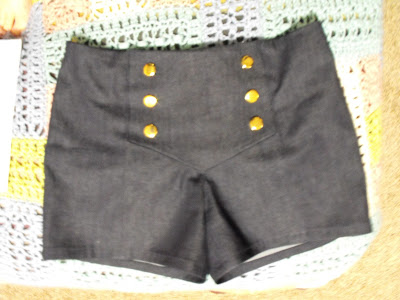Since I last wrote, I have finished my Bachelor of Arts Honours Degree in History and started my MA in History, so its been pretty busy. For my MA I have been working on learning the new and exciting field of food history.
This week I presented a paper for my class in Modern British History on First World War Home Front Food. Cookbooks and recipes were important sources for my paper, and I really enjoy how food history allows me to create something from the past.
Ian Mosby, author of Food Will Win the War: The Politics, Culture, and Science of Food on Canada's Home Front, has a great blog post about "eating your primary sources." (You can find it here: http://www.ianmosby.ca/eat-your-primary-sources-or-teaching-the-taste-of-history/) Mosby talks about how he had his students pick recipes to cook for class as an exercise that allowed them to sense the past, while also allowing them to experience a primary source where misreading had immediate and tangible results. Like other primary sources, recipes need to be read in context and with a critical eye.
Armed with the great advice from Mosby's blog, I took to my kitchen to create a First World War era recipe.
The recipe I used was from an online article for The Telegraph where the author and a food historian created two recipes. The historian had found the cake recipe in a handwritten notebook from the period. (It can be found here: http://www.telegraph.co.uk/foodanddrink/10982324/First-World-War-food-anyone-for-fish-sausages.html.) I chose not to use a recipe from one of my sources mainly because I wanted something that was simple, portable, and could be easily shared with my classmates. That and I had all but one of the ingredients.
Here are some things I learned while making the cake:
 1. You first should know that I used shortening instead of lard because I knew I would be sharing the cake with a vegetarian.
1. You first should know that I used shortening instead of lard because I knew I would be sharing the cake with a vegetarian.  2. It says to cook the lard, sugar, and spices until the raisins are plump. However, the raisins soak up all the fat.
2. It says to cook the lard, sugar, and spices until the raisins are plump. However, the raisins soak up all the fat.  3. Because the raisins soaked up all the fat, there was no way that I would be able to successfully bind the flour and other ingredients.
3. Because the raisins soaked up all the fat, there was no way that I would be able to successfully bind the flour and other ingredients. 4. I decided to add about a 1/3 a cup of water as a binding agent. While this was outside of what the recipe called for, I realised that most cake recipes I had made from historical sources in the past contained water or milk, and it very likely would have been assumed that whoever the recipe was intended for would know the basics of making a cake.
4. I decided to add about a 1/3 a cup of water as a binding agent. While this was outside of what the recipe called for, I realised that most cake recipes I had made from historical sources in the past contained water or milk, and it very likely would have been assumed that whoever the recipe was intended for would know the basics of making a cake.
The cake was really very good, especially when it was still warm. It was a bit crumbly due to the lack of eggs. It was really fun for me to get back into cooking from historical recipes and I enjoyed sharing sharing it with my class!
This is also my post for the Historical Food Fortnightly challenge, "Make It Do or Do Without."
How Accurate Is It?: I think it is pretty accurate. I mean, I did add water, but that was a logical addition based upon my historical knowledge.
This is also my post for the Historical Food Fortnightly challenge, "Make It Do or Do Without."
The Challenge: Make It Do or Do Without
The Recipe: http://www.telegraph.co.uk/foodanddrink/10982324/First-World-War-food-anyone-for-fish-sausages.html.
The Date/Year and Region: 1914-1918
How Did You Make It: see above :)
Time to Complete: approx. 20 mins prep, 45 mins cooking. (That is an hour and 5 minutes.)
Total Cost: I only had to purchase raisins, so about $4 CND
How Successful Was It?: It was very yummy, lovely spice cake flavour.
How Accurate Is It?: I think it is pretty accurate. I mean, I did add water, but that was a logical addition based upon my historical knowledge.




















